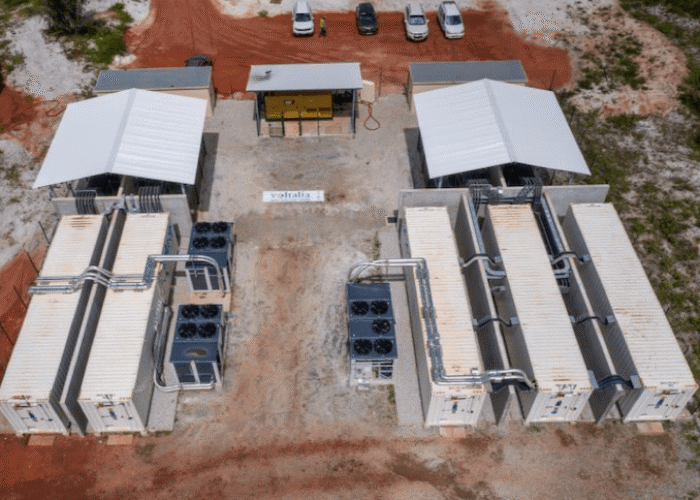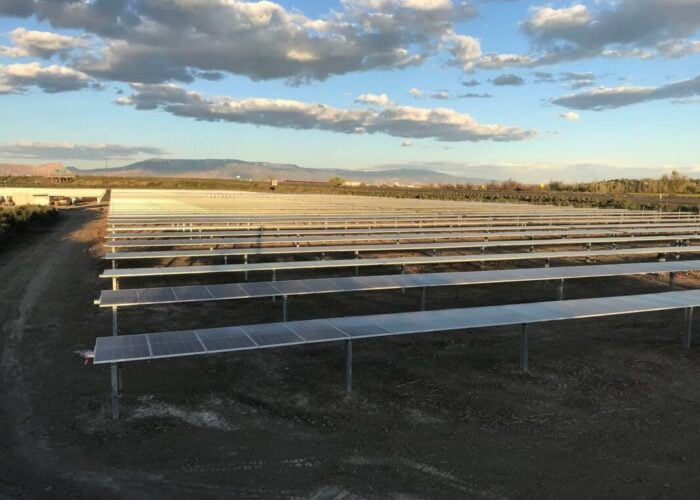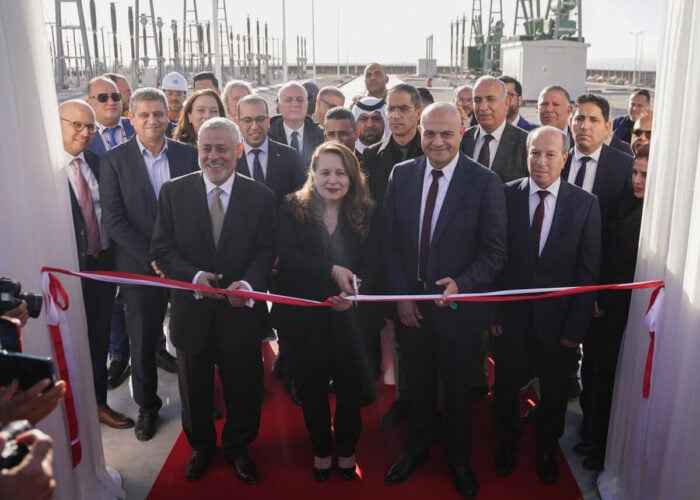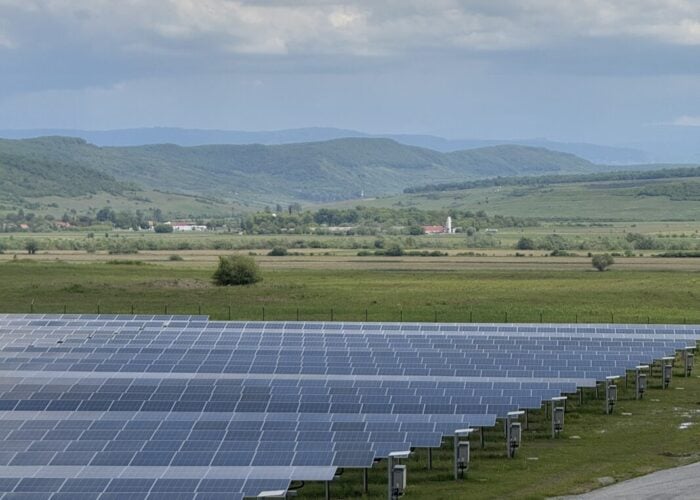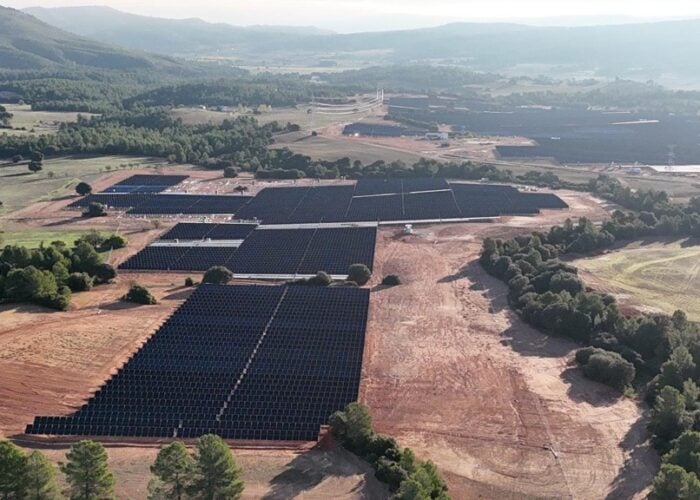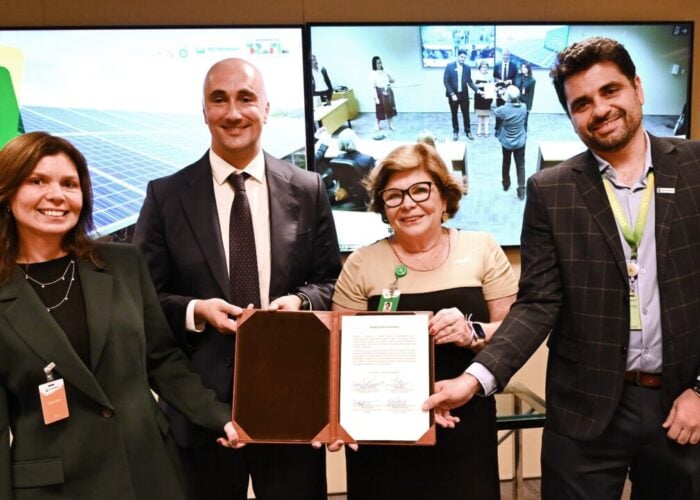In issuing third quarter 2013 financial results, thin-film market leader First Solar, reported its largest quarterly decline in its CdTe module cost per-watt since 2007.
As a result of its manufacturing cost reduction program, highlighted earlier in the year at its Analyst Day event, the company said it had successfully met significant milestones in re-establishing itself as the lowest-cost PV manufacturer in the industry.
Try Premium for just $1
- Full premium access for the first month at only $1
- Converts to an annual rate after 30 days unless cancelled
- Cancel anytime during the trial period
Premium Benefits
- Expert industry analysis and interviews
- Digital access to PV Tech Power journal
- Exclusive event discounts
Or get the full Premium subscription right away
Or continue reading this article for free
“We have reduced our module manufacturing cost per watt to US$0.59 from US$0.67 last quarter, an US$0.08 per watt or 12% reduction quarter-on-quarter,” said Jim Hughes, Chief Executive Officer of First Solar, in the conference call. “This is the best quarter-over-quarter cost improvement in six years on a per watt basis and highest percentage reduction since our IPO [2007].
Hughes went on to highlight even lower manufacturing costs, noting that First Solar’s conversion efficiency roadmap targets and manufacturing improvement program as well as cost saving initiatives, revealed a US$0.57/W, excluding plant underutilization.
Importantly, the company demonstrated that it had met its conversion efficiency roadmap targets this year.
“We are now flash-testing modules at our Perrysburg facility with the conversion efficiency of 14.1%,” noted Hughes.
First Solar also said that in October, 2013 it’s lead production line averaged module efficiencies of 13.9% and expected all lines to reach 13.9%, over the next few quarters.
Lowest cost provider
Taking the 14.1% module efficiency achieved on its best line at its Perrysburg facility, First Solar said that this pointed to a cost per watt of US$0.49
“If we take the additional impact of excluding freight warranty and recycling cost, we would be in the low 40s, so I think that's kind of the competitive benchmark that we should all keep in front of us,” added Hughes. “We have the capability today, [14.1%] which we equate to an apples to apples comparison [with conventional c-Si cell/modules in real-world temperature conditions] across our profile [of] the low US$0.42 to US$0.43/W.
In mid-year, Solar Frontier said that its latest “champion” CIS thin-film module had reached a conversion efficiency of 14.6%, which was verified by Underwriters Laboratories, while volume production modules were above 13%.
According to a GTM Research report, ‘The module market landscape’, mainstream multicrystalline modules had an average conversion efficiency of around 15%.
In comparison with the leading c-Si module manufacturer, Yingli Green Energy said at its recent Analyst Day event in October, 2013 that its overall non-silicon costs were down to US$0.45/W at the end of the second quarter, 2013. Yingli Green also reported that its overall silicon cost stood at US$0.10/W, giving a total production cost of US$0.55/W.
New market opportunities
With average module efficiencies expected to be in the 14% range and a highly competitive cost per watt in 2014, First Solar executives hinted that the Perrysburg facility efficiency landmark could potentially open up new business segments, while significantly increasing its total addressable market.
Recently, Solar Frontier said it would be launching its ‘Solacis neo,’ lightweight glass substrate CIS module for the residential and commercial rooftop market in Japan. The company was also showcasing CIS thin film technology in BIPV applications.
Market and financial analysts had previously been quick to highlight that low-cost c-Si producers such as Yingli Green had caught and gone on to beat First Solar as the lowest cost producer, threatening the thin-film leader’s ability to compete effectively in markets where the company wasn’t protected by its project development business model, such as third-party module sales.
In restoring its low-cost leadership position at a time c-Si cost reductions slow, due primarily to significant polysilicon price declines over the last two-years, First Solar could be starting a new chapter in its revamped business success since restructuring.

